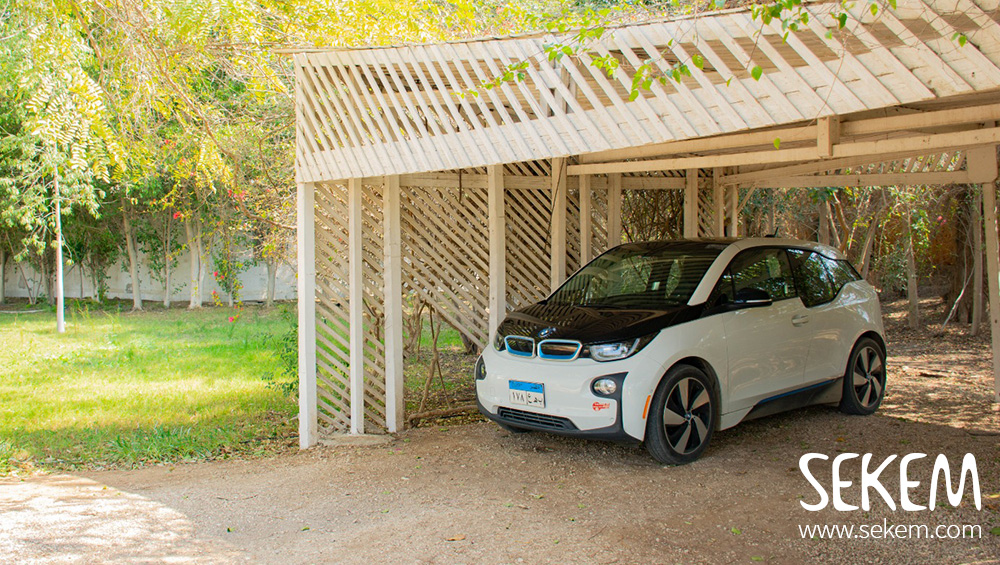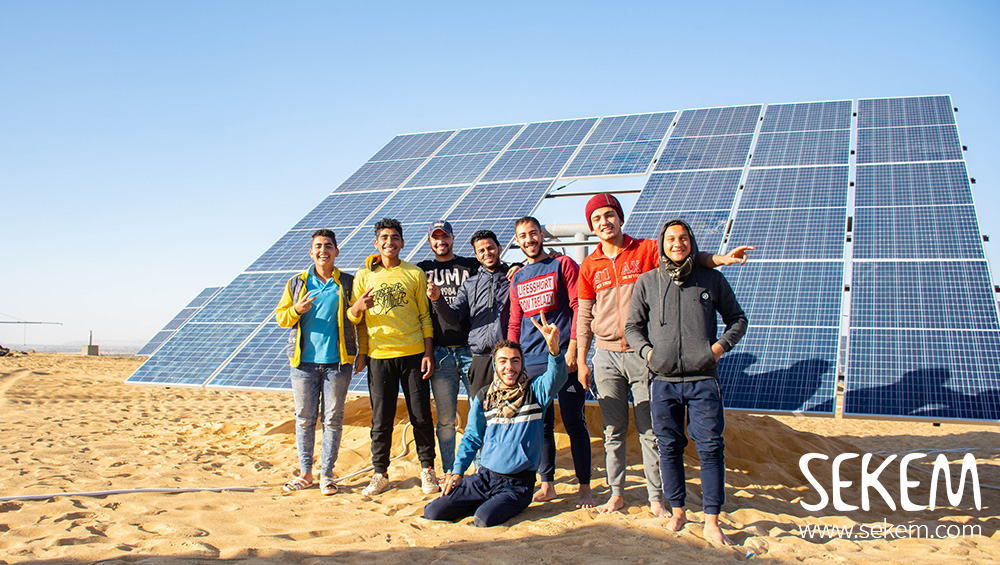100 percent renewable energy, this is not a long-term goal for SEKEM anymore, but shall be achieved within two years. For this purpose, all SEKEM institutions will focus on implementing this ambitious project in the first half of 2021. “Generating our energy exclusively from renewable sources must become a reality in SEKEM as soon as possible because this is the only way to get closer to our 2057 vision goal of 100 percent renewable energy for all of Egypt,” explains SEKEM CEO Helmy Abouleish. “We want to provide models in SEKEM that will firstly convince our neighbors and farmers, and later many institutions throughout the whole country, that renewable energy is not just the only future option for our environment, but also more cost-effective.”
Green power for SEKEM and the surrounding area
In its Vision 2057, SEKEM has set 18 goals with which the initiative aims to contribute to a sustainable transformation of Egypt in the areas of environment, economy, culture and society. Every six months, the focus is on one specific vision goal, and for the beginning of 2021 it is on renewable energy. To begin with, targets were set: By the end of the year, Heliopolis University and SEKEM’s largest company, iSiS Organic, are to operate only on renewable electricity. In 2022, the SEKEM pharmaceutical company Atos and the companies NaturTex and Lotus will follow. So much for the planning. The approval process with the government is running in parallel. In Egypt, renewable energies can only be connected to the public power grid with official permission – and to date, it is only permitted to obtain 60 percent of one’s own demand from renewable sources.
So what does the actual implementation look like? SEKEM uses its own company EcoEnergy, which has the license to create and implement concepts and to connect renewable energies to the public power grid. The company then sells the green electricity to SEKEM facilities. Like this, EcoEnergy could also supply renewable energy to the surrounding 13 villages in the long run. The goal is for this electricity to be comparable in price to conventional electricity, and in the best case even cheaper.

Another step toward 100 percent renewable energy is e-mobility. With green electricity, electric vehicles can also make their way into SEKEM. While this is not an easy undertaking, as registration was not possible in Egypt for a long time and still is intricate, SEKEM finds that the effort is worthwhile. For example, a BMW i3 with a range of 280 kilometers already travels daily from the SEKEM mother farm to the head office, which is located on the outskirts of Cairo. In 2021, more of the farm’s own SEKEM vehicles are to be converted to electric motors.
Making use of wind and sun
Much is also happening at the new SEKEM desert farm in Wahat El-Bahareyya with regard to the future goal. Here, the conversion is much easier because the farm is not connected to the public power grid. Hence, there is not much standing in the way of a 100 percent conversion. Already, many of the irrigation systems run exclusively on solar energy. But only when the sun is shining. To have electricity for the buildings at night as well, other energy sources are needed as an alternative to batteries. In the desert, wind is a good source of energy in addition to the sun. To this end, SEKEM is now researching at a test wind farm. There is also a first machine that can produce hydrogen, which could be another fuel for the night.

In true SEKEM fashion, all measures and projects are always viewed from the various dimensions and are accompanied accordingly. For example, trainees from the SEKEM Vocational Training Center install and maintain the equipment in Wahat, and students from the Heliopolis University participate in the research. This supports the evolving professionals in their practical and applied learning and increasingly creates a broader awareness.
“It’s exciting to see more and more of our neighbors in the desert switching to solar energy, because here, generating electricity through the renewable source is already cheaper than using diesel,” reports Helmy Abouleish. “We really see a lot of potential here and are very confident that we can make quite a few contributions to green energy generation throughout all of Egypt by 2057.”

